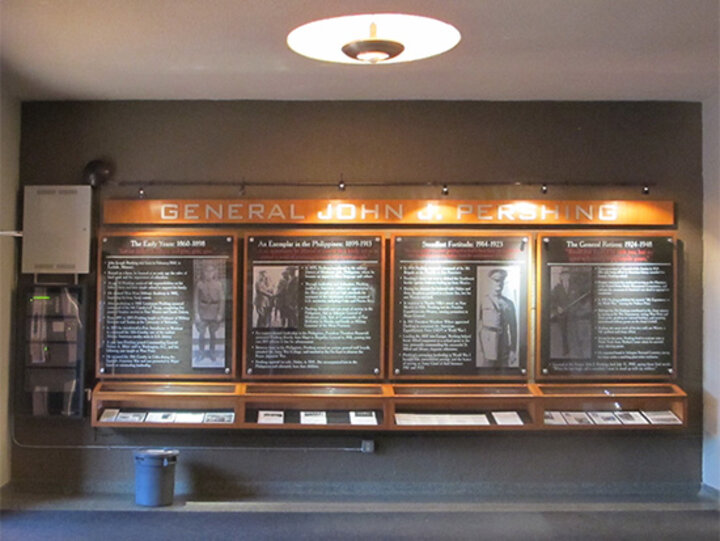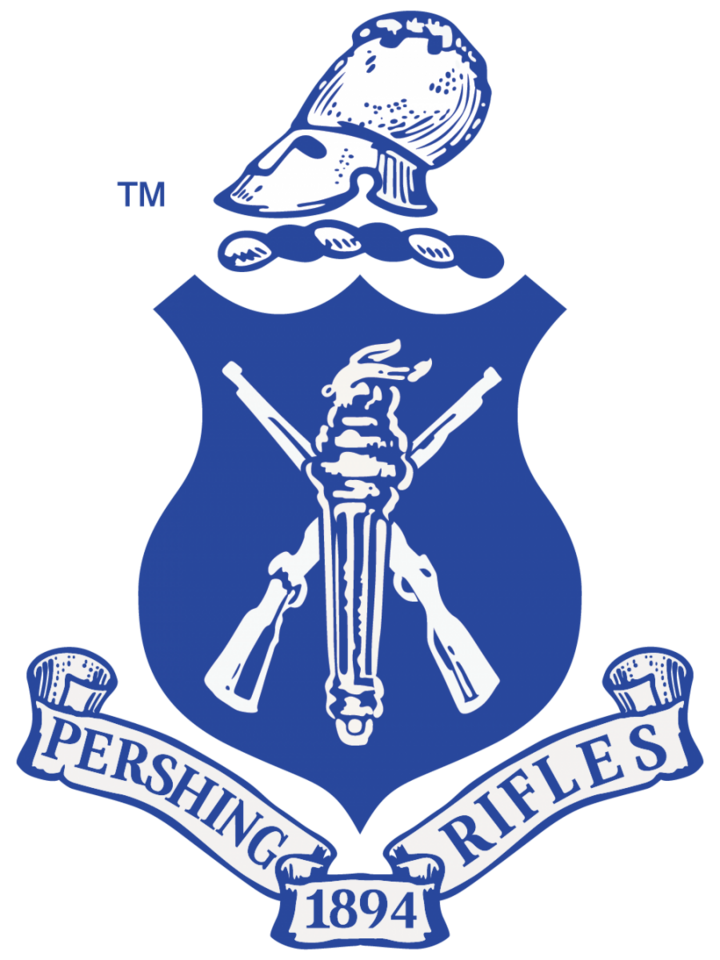
The John J. Pershing Memorial Timeline is housed in the lobby area of the Pershing Military and Naval Science building. The building primarily serves the three ROTC programs (Army, Air Force and Navy, which develops Marine Corps officers) at Nebraska, and also hosts a number of visitors to campus, including international dignitaries, high level military officers, veterans and prospective students.
General John “Black Jack” Pershing founded the renowned Pershing Rifles drill organization at Nebraska, and earned a degree in law. He is the only officer to attain the rank of “General of the Armies” – the highest rank possible – while living (George Washington was posthumously promoted to the rank in 1976).
A competent leader can get efficient service from poor troops, while on the contrary an incapable leader can demoralize the best of troops.
General John J. Pershing, General of the Armies of the United States of America

Pershing Rifles
In 1894, as a Professor of Military Science and Tactics at the University of Nebraska, he founded the renowned Pershing Rifles, a military drill team organization for university cadets. Now recognized as a coed military fraternal organization, the National Society of Pershing Rifles has over 50 units across the United States whose purpose is to develop outstanding traits of leadership, military science and discipline within the framework of a military-oriented, honorary fraternity.
Pershing eventually went on to become commander of the American Expeditionary Forces in World War I. In 1921 he was appointed as Chief of Staff to the United States Army and in 1932 received the Pulitzer Prize for his memoir entitled “My Experiences in the World War.” His post-World War Army, recalling the logistical headaches of moving men and material across the continent during wartime, created a proposal for a national network of military and civilian highways. When Pershing presented the plan to Congress in 1922, its centerpiece, a map of the United States with inter-state highways plotted, became known as the “Pershing Map.” The Interstate Highway System, finally instituted in 1956, bears considerable resemblance to the earlier infrastructure planning proposed by Pershing.
General Pershing died in 1948 and is known for inspiring millions of Americans to sacrifice for their country through his example of hard work, dedication, courage, and humility.